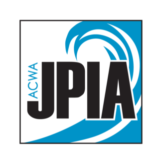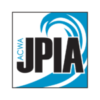Looking Ahead to 2024: Employee Benefits Program Projections
From the beginning of the pandemic in March 2020, health benefits claims expenses have been incredibly volatile due to delayed or foregone care and a rebound due to pent-up demand for care. More recently, inflation and increases in labor costs have added to higher costs for providers and health plans. It has been reported that about half of the nation’s hospitals finished 2022 with negative operating margins. Some are calling it the worst year on record for hospitals. Despite these factors, there were no changes to PPO rates in 2019, 2020, or 2021. Rates were reduced by 5% in 2022 and reduced again by 10% in 2023. Consequently, JPIA’s 2023 self-funded PPO medical plan rates are 15% lower than they were in 2018.
Due to modifications made to the PPO health plans, with minor or positive impacts on the participants, JPIA’s claims expenses have remained relatively flat except during the pandemic. During that time, excess funds continued to accumulate while participants stayed home from doctor visits and delayed planned surgeries.
Unlike JPIA’s other programs, it is problematic to write refund checks to member agencies for Employee Benefits. There are complications related to returning a portion to employees based on their contributions, ever-changing enrollments, and defining the time period for enrollment in which the refunds apply. To simplify administration, JPIA returns surplus funds to members by subsidizing premiums.
Expenses have increased approximately 20% over the last year, coupled with a 10% decrease in rates. Thus, JPIA has been successful in returning large amounts of surplus funds to the members, returning approximately $10 million to date. This also means the program has some catching up to do. The significant subsidies in 2022 and 2023 will require increases in rates to meet expenses over the following years. To increase premiums to match expenses, it is estimated that Anthem PPO rates will increase by at least 10% per year for the next couple of years. Hopefully, market forces will have stabilized by then. It is difficult to see years down the road when it comes to healthcare expenses.
Unlike the self-funded medical plans, the Anthem HMO and Kaiser HMO plans are fully insured pass-through programs. JPIA is not in control of these rates, is not able to do long-term planning for the use of surplus funds to address market fluctuations, and does not have the ability to return funds collected in excess of premiums. We believe the Anthem HMO and Kaiser plans will see low double-digit rate increases in 2024. The HMO increases are driven largely by the market forces described above. The PPO increase is part of a step-by-step plan to return funds to member agencies. The carefully managed, custom-designed self-funded Anthem PPO plans continue to outperform the insured HMO plans, and we expect that to continue to be the case. We have seen enrollment shifts to the PPOs because of lower pricing and more robust benefit offerings.
Other preliminary projections are as follows:
- Dental and vision are expected to remain flat or increase by 2% at most in 2024.
- EAP will not increase.
- Life and disability rates will not change.
- UnitedHealthcare Medicare Advantage PPO and Kaiser Senior Advantage rates will be mostly dependent on Medicare subsidy amounts, which won’t be released until later in the year.
Rates for the 2024 Employee Benefits plans will be set by the Executive Committee on July 27, 2023.
Recruitment and retention of valuable staff at member agencies are heavily impacted by the benefit packages offered to employees. JPIA completes a deep dive analysis of plan designs, costs, trends, best practices, and market position each renewal cycle. JPIA will continue to provide a balance between cost, robustness, and long-term sustainability to ensure JPIA members and their employees have the highest value plans available.
Written by: Sandra Smith, Employee Benefits Manager



